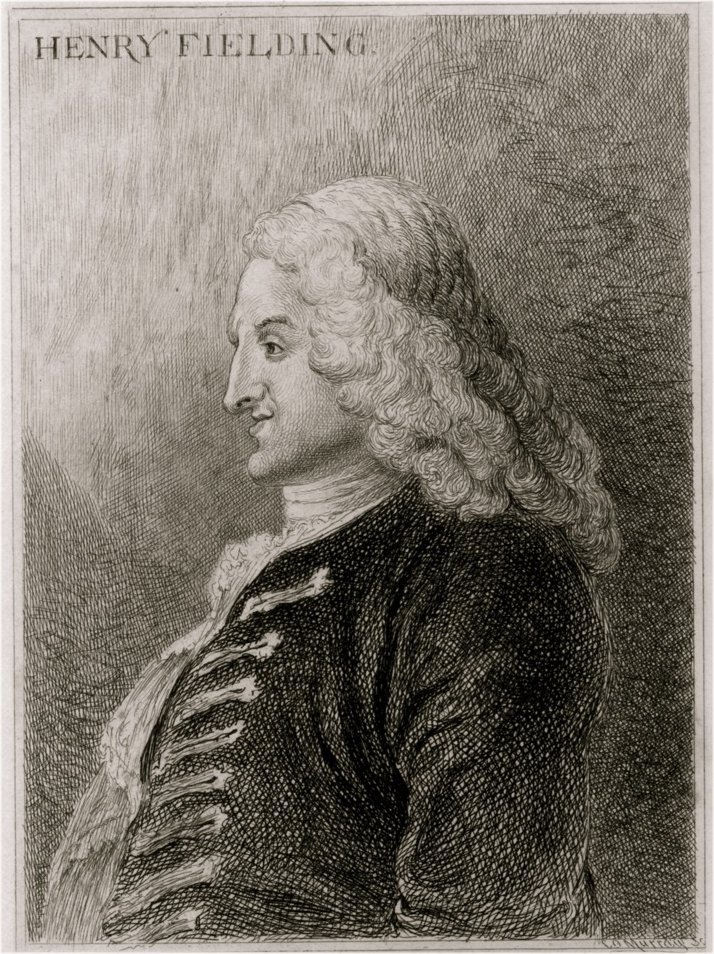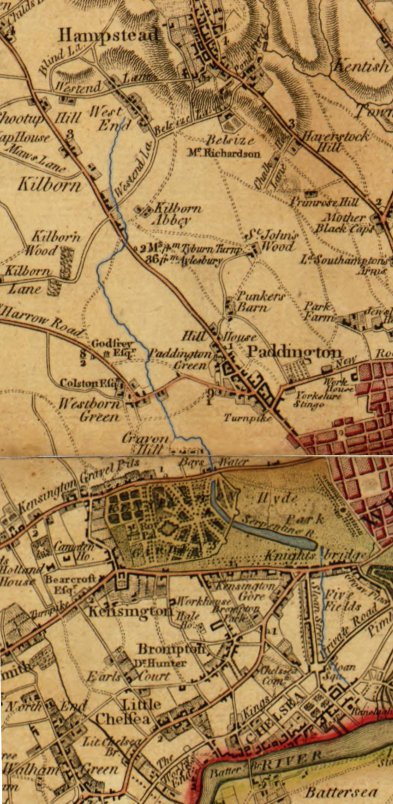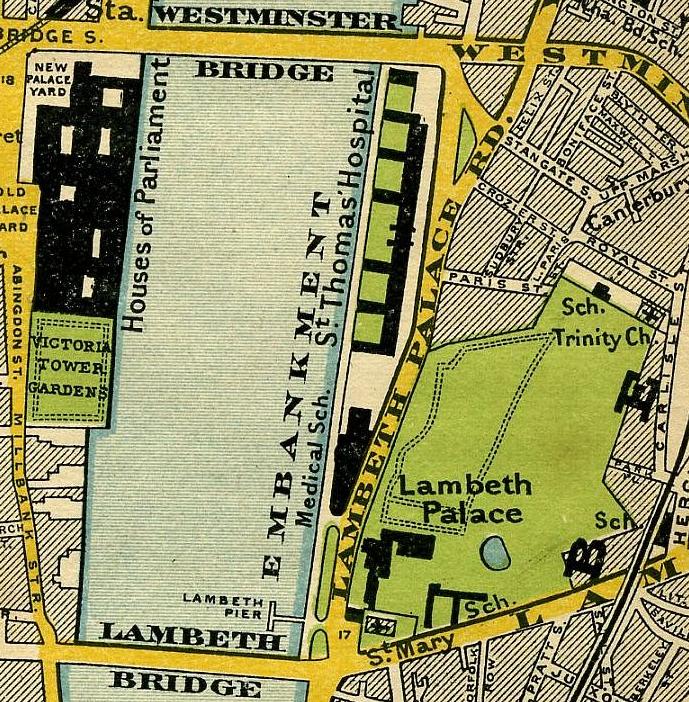|
John Fielding
Sir John Fielding (16 September 1721 – 4 September 1780) was an English magistrate and social reformer of the 18th century. He was the younger half-brother of novelist, playwright and chief magistrate Henry Fielding. Despite being blinded in an accident at the age of 19, John set up his own business and, in his spare time, studied law with Henry. Early life John Fielding was born on 16 September 1721, most likely in Blenheim Street, St James's, London. He was the third child of Lieutenant-General Edmund Fielding and his second wife Anne Blanchard. Fielding's mother had previously been married to an Italian named Rapha and may have been the owner of an "eating house" in London. Among Fielding's half-siblings were Henry Fielding and Sarah Fielding, with whom he had close relationships, both products of his father's first marriage Very little is known about Fielding's childhood and early life; it is possible that he spent some time in service with the Royal Navy. He had poor ... [...More Info...] [...Related Items...] OR: [Wikipedia] [Google] [Baidu] |
Henry Fielding
Henry Fielding (22 April 1707 – 8 October 1754) was an English writer and magistrate known for the use of humour and satire in his works. His 1749 comic novel ''The History of Tom Jones, a Foundling'' was a seminal work in the genre. Along with Samuel Richardson, Fielding is seen as the founder of the traditional English novel. He also played an important role in the history of law enforcement in the United Kingdom, using his authority as a magistrate to found the Bow Street Runners, London's first professional Police, police force. Early life Henry Fielding was born on 22 April 1707 at Sharpham Park, the seat of his mother's family in Sharpham, Somerset. He was the son of Lt.-Gen. Edmund Fielding and Sarah Gould, daughter of Sir Henry Gould. A scion of the Earl of Denbigh, his father was nephew of William Fielding, 3rd Earl of Denbigh. Educated at Eton College, Fielding began a lifelong friendship with William Pitt the Elder. His mother died when he was 11. A suit for custod ... [...More Info...] [...Related Items...] OR: [Wikipedia] [Google] [Baidu] |
Police Gazette (Great Britain And Ireland)
''The Police Gazette'', established in 1772 as ''The Quarterly Pursuit'', and later named the ''Public Hue and Cry'' and other variants, was originally a weekly newspaper produced until 1883 by the Home Office and from then until 2017 by the Metropolitan Police. Its primary purpose was to publish notices of wanted criminals with requests for information, and where appropriate to offer rewards.The National Archives, Series Reference HO 75, 'Hue and Cry and Police Gazette', 1828–1845 http://nationalarchives.gov.uk/catalogue/displaycataloguedetails.asp?CATID=7630&CATLN=3&accessmethod=5&j=1The Open University Archive, The Police Gazette Collection, ref GB/2315/POLGAZ http://libraryarchive.open.ac.uk/ead/html/gb-2315-polgaz-p1.shtml In later years it became a bi-monthly publication produced by the College of Policing in London until it ceased publication in 2017. Title Initially titled ''The Quarterly Pursuit'', the publication was repeatedly renamed, first to ''Public Hue and ... [...More Info...] [...Related Items...] OR: [Wikipedia] [Google] [Baidu] |
Kensington
Kensington is an area of London in the Royal Borough of Kensington and Chelsea, around west of Central London. The district's commercial heart is Kensington High Street, running on an east–west axis. The north-east is taken up by Kensington Gardens, containing the Albert Memorial, the Serpentine Gallery and John Hanning Speke, Speke's monument. South Kensington and Gloucester Road, London, Gloucester Road are home to Imperial College London, the Royal College of Music, the Royal Albert Hall, Natural History Museum, London, Natural History Museum, Victoria and Albert Museum, and Science Museum, London, Science Museum. The area is also home to many embassies and consulates. Name The Manorialism, manor of ''Chenesitone'' is listed in the Domesday Book of 1086, which in the Old English language, Anglo-Saxon language means "Chenesi's List of generic forms in place names in Ireland and the United Kingdom, ton" (homestead/settlement). One early spelling is ''Kesyngton'', as wri ... [...More Info...] [...Related Items...] OR: [Wikipedia] [Google] [Baidu] |
Parish Church
A parish church (or parochial church) in Christianity is the Church (building), church which acts as the religious centre of a parish. In many parts of the world, especially in rural areas, the parish church may play a significant role in community activities, often allowing its premises to be used for non-religious community events. The Church architecture, church building reflects this status, and there is considerable variety in the size and style of parish churches. Many villages in Europe have churches that date back to the Middle Ages, but all periods of architecture are represented. Catholic Church Each diocese (administrative unit, headed by a bishop) is divided into parishes. Normally, a parish consists of all Catholics living within its geographically defined area. Within a diocese, there can also be overlapping parishes for Catholics belonging to a particular rite, language, nationality, or community. Each parish has its own central church called the parish church, ... [...More Info...] [...Related Items...] OR: [Wikipedia] [Google] [Baidu] |
Brompton, London
Brompton, sometimes called Old Brompton, survives in name as a Wards and electoral divisions of the United Kingdom, ward in the Royal Borough of Kensington and Chelsea in London. Until the latter half of the 19th century it was a scattered village made up mostly of market gardens in the county of Middlesex. It lay southeast of the village of Kensington, abutting the parish of St Margaret's, Westminster at the hamlet of Knightsbridge to the northeast, with Little Chelsea to the south. It was bisected by the Fulham Turnpike trust, Turnpike, the main road westward out of London to the ancient parish of Fulham and on to Putney and Surrey. It saw its first parish church, Holy Trinity Brompton, only in 1829. Today the village has been comprehensively eclipsed by segmentation due principally to railway development culminating in London Underground lines, and its imposition of station names, including Knightsbridge, South Kensington and Gloucester Road, London, Gloucester Road as the nam ... [...More Info...] [...Related Items...] OR: [Wikipedia] [Google] [Baidu] |
Duke Street, St James's
Duke Street, St James's is a street in the St James's area of the City of Westminster, London. It runs from Piccadilly in the north to King Street in the south, and is crossed by Jermyn Street. Ryder Street joins it on the western side. On the eastern side it provides access to Masons Yard. The upmarket department store Fortnum & Mason occupies the north-west corner. History Duke Street first appeared in the rate books of the parish of St. Martin in the Fields in 1673. It is likely that it was named in honour of James, Duke of York, later James II. Building of the street was completed in the 1680s, though none of the original houses remain. The Chequers Tavern, at No. 16, occupies a site that has been a public house has since 1732, when Henry Mason, the then occupant, was granted a victualler's licence for an unnamed tavern. His successor was Robert Morgoridge, and William Morgridge was granted a victualler's licence for the Mason's Arms in Duke Street in 1744. By 1751, the ... [...More Info...] [...Related Items...] OR: [Wikipedia] [Google] [Baidu] |
Doctor (title)
Doctor is an Academic degree, academic title that originates from the Latin word of the same spelling and meaning. The word is originally an Agent noun, agentive noun of the Latin verb 'to teach'. It has been used as an academic title in Europe since the 13th century, when the first doctorates were awarded at the University of Bologna and the University of Paris. Having become established in European universities, this usage spread around the world. Contracted "Dr" or "Dr.", it is used as a designation for a person who has obtained a doctorate (commonly a Doctor of Philosophy, PhD). In past usage, the term could be applied to any learned person. In many parts of the world today it is also used by medical practitioners, regardless of whether they hold a doctoral-level Academic degree, degree. Origins The doctorate () appeared in Middle Ages, medieval Europe as a license to teach (licentia docendi) at a medieval university. The roots of the term doctor can be traced to the ... [...More Info...] [...Related Items...] OR: [Wikipedia] [Google] [Baidu] |
Reverend
The Reverend (abbreviated as The Revd, The Rev'd or The Rev) is an honorific style (form of address), style given to certain (primarily Western Christian, Western) Christian clergy and Christian minister, ministers. There are sometimes differences in the way the style is used in different countries and church traditions. ''The Reverend'' is correctly called a ''style'', but is sometimes referred to as a title, form of address, or title of respect. Etymology The term is an anglicisation of the Latin , the style originally used in Latin documents in medieval Europe. It is the gerundive or future passive participle of the verb ("to respect; to revere"), meaning "[one who is] to be revered/must be respected". ''The Reverend'' is therefore equivalent to ''the Honourable'' or ''the Venerable''. Originating as a general term of respectful address in the 15th century, it became particularly associated with clergy by the 17th century, with variations associated with certain ranks in th ... [...More Info...] [...Related Items...] OR: [Wikipedia] [Google] [Baidu] |
Lichfield
Lichfield () is a city status in the United Kingdom, cathedral city and Civil parishes in England, civil parish in Staffordshire, England. Lichfield is situated south-east of the county town of Stafford, north-east of Walsall, north-west of Tamworth, Staffordshire, Tamworth, south-west of Burton upon Trent and 14 miles (22.5 km) north of Birmingham. At the time of the 2021 Census, the population was 34,738 and the population of the wider Lichfield District was 106,400. Notable for its three-spired medieval Lichfield Cathedral, cathedral, Lichfield was the birthplace of Samuel Johnson, the writer of the first authoritative ''A Dictionary of the English Language, Dictionary of the English Language''. The city's recorded history began when Chad of Mercia arrived to establish his Diocese of Lichfield, bishopric in 669 AD and the settlement grew as the ecclesiastical centre of Mercia. In 2009, the Staffordshire Hoard, the largest hoard of Anglo-Saxons, Anglo-Saxon gold and s ... [...More Info...] [...Related Items...] OR: [Wikipedia] [Google] [Baidu] |
Knight Bachelor
The title of Knight Bachelor is the basic rank granted to a man who has been knighted by the monarch but not inducted as a member of one of the organised Order of chivalry, orders of chivalry; it is a part of the Orders, decorations, and medals of the United Kingdom, British honours system. Knights Bachelor are the most ancient sort of British knight (the rank existed during the 13th-century reign of Henry III of England, King Henry III), but Knights Bachelor rank below knights of chivalric orders. A man who is knighted is formally addressed as "Sir [First Name] [Surname]" or "Sir [First Name]" and his wife as "Lady [Surname]". The designation "Bachelor" in this context conveys the concept of "junior in rank". Criteria Knighthood is usually conferred for public service; amongst its recipients are all male judges of His Majesty's High Court of Justice in England. It is possible to be a Knight Bachelor and a junior member of an order of chivalry without being a knight of that or ... [...More Info...] [...Related Items...] OR: [Wikipedia] [Google] [Baidu] |
Lambeth
Lambeth () is a district in South London, England, which today also gives its name to the (much larger) London Borough of Lambeth. Lambeth itself was an ancient parish in the county of Surrey. It is situated 1 mile (1.6 km) south of Charing Cross, across the river from Westminster Palace. The population of the London Borough of Lambeth was 303,086 in 2011. The area experienced some slight growth in the medieval period as part of the manor of Lambeth Palace. By the Victorian era, the area had seen significant development as London expanded, with dense industrial, commercial and residential buildings located adjacent to one another. By this point, there were distinct localities (like Vauxhall) appearing on the map, and a separate parish of South Lambeth was created in 1861. The changes brought by World War II altered much of the fabric of Lambeth. Subsequent development in the late 20th and early 21st centuries has seen an increase in the number of high-rise buildings. The ... [...More Info...] [...Related Items...] OR: [Wikipedia] [Google] [Baidu] |
Chief Metropolitan Stipendiary Magistrate
The Chief Metropolitan Stipendiary Magistrate, known as Chief Metropolitan Police Magistrate until 1949, and also known as the Chief Metropolitan Magistrate and Chief Magistrate of the Police Courts of the Metropolis, was a senior British magistrate based in London. The most senior metropolitan stipendiary magistrate (full-time magistrates appointed for London and the surrounding counties), the Chief Metropolitan Magistrate had responsibilities for the administration of the London magistrates' courts as well as the appointment of metropolitan stipendiary magistrates. He also had special responsibilities in relation to extradition proceedings. The Chief Metropolitan Magistrate was based at Bow Street Magistrates' Court. The position was abolished on 31 August 2000 by the Access to Justice Act 1999, which unified the stipendiary bench of England and Wales and renamed stipendiary magistrates to District Judge (Magistrates’ Courts). The position of Chief Metropolitan Magistrate, whi ... [...More Info...] [...Related Items...] OR: [Wikipedia] [Google] [Baidu] |






